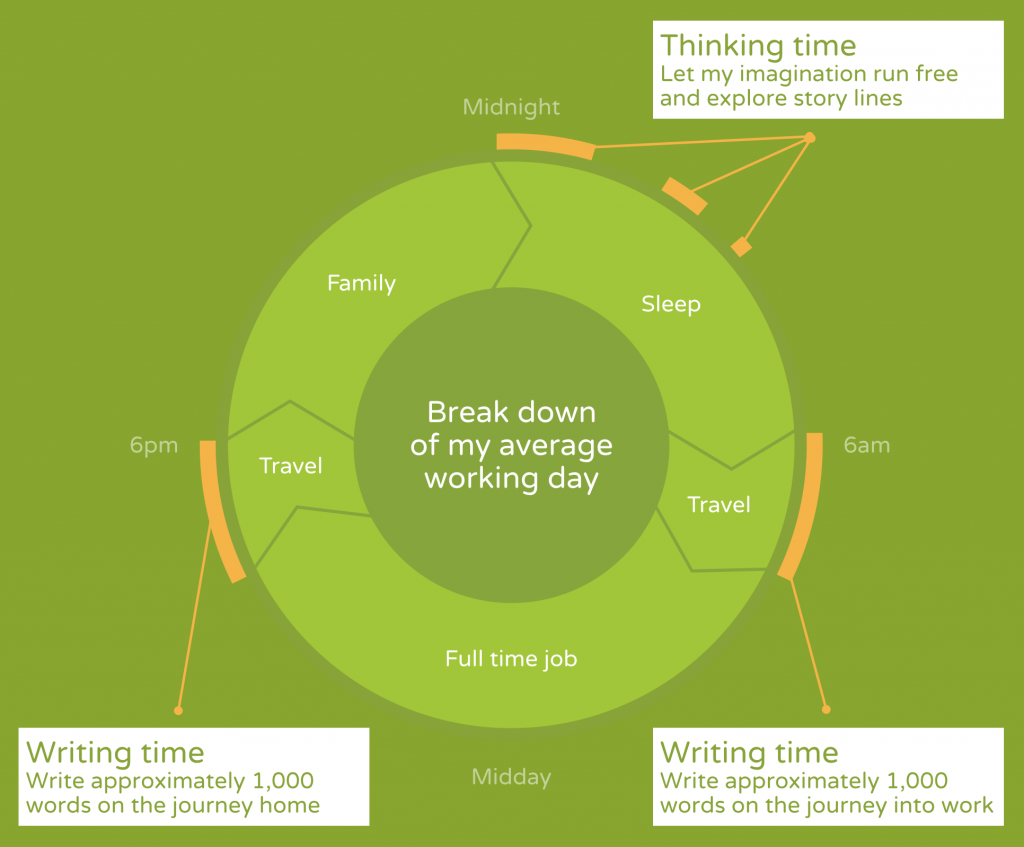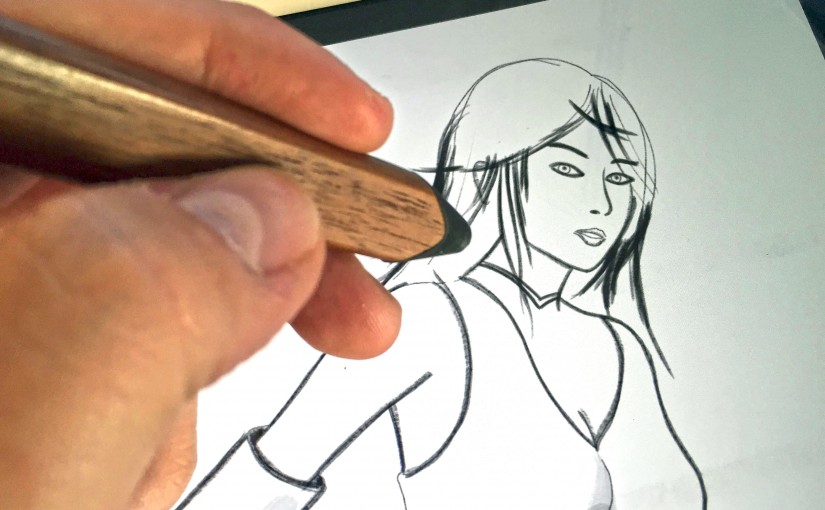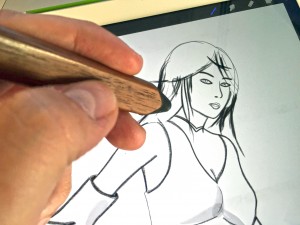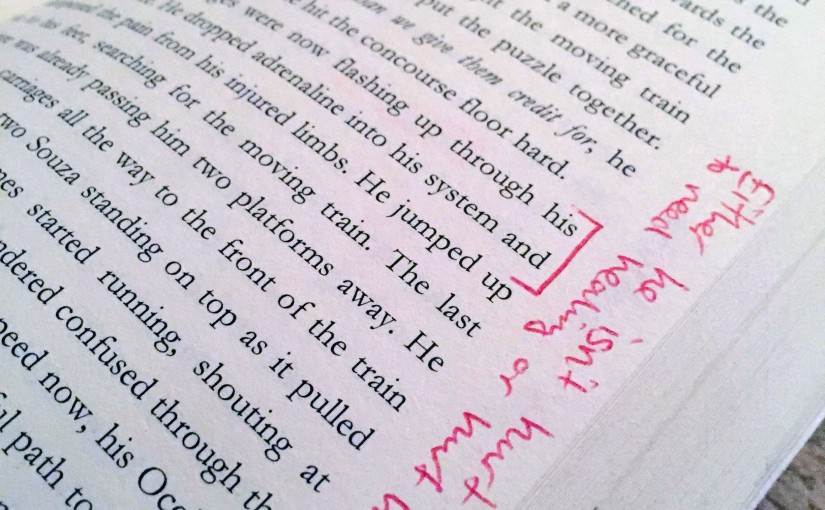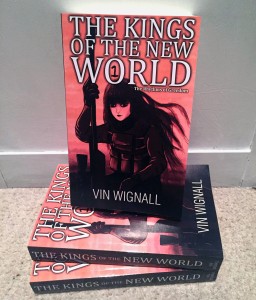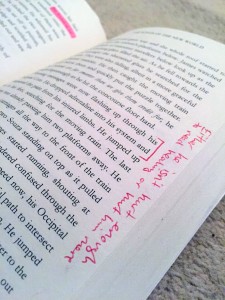A common question I get asked as an author is… ‘How long did it take you to write your first book?”
And my initial response would normally be… “About 18 months from start to release.”
But then that doesn’t really explain how much effort was put in during that period of a year and a half. Especially as I have a full time job, a wife and two young daughters to care for.
So to help explain the effort that it took me to create my 100,000 word, science-fiction novel, I try to explain my process. And it looks a little like this…
As you can see via the diagram above, having a full time job and a family take up a large part of my life. So to avoid abusing either one I looked to the remaining parts of the day. I commute in and out of London to work, a total of about 2 – 3 combined hours sitting on a train. I used to spend this time reading, playing games on my phone or listening to music.
Then there is my sleeping time. I have always struggled with sleep. I wake up a lot and do some other crazy things that we can talk about another time. But several years ago I discovered a trick that worked for me. When I am ready to sleep, I imagine a story, often the same story from the previous night and I play through it in my mind. As the story ran out, I would allow my creativity to extend it, often nodding off shortly after. Sometimes, if I was lucky, my dreams would continue the journey too. If I woke up during the night, the same process would help me get back to sleep quickly.
At the start of 2014 I decided that it was a shame that these stories would become lost over time. Pair this up with a feeling that I wanted to do something in life that left a mark (Read about: Is this a mid-life crisis?) and you come to my decision to write a book during my daily commutes.
So if you still want to put a figure on it, I could come up with a calculation something like this…
Avg time per work day: 3hrs (Comm) + 1hr (Thinking) x 5 days a week x 45 weeks of work a year x 1.5 years spent in total.
That comes to 1,350 hours of effort.
Now this doesn’t take into account everything, but it is a fairly good representation. It also accounts for more than the initial writing period, it includes the layering and editing processes too and also the bits like map creations, character sketches, cover designs and the initial stages of marketing.
Marketing… You’ll soon discover that this can take up just as much time as writing the book in the first place.
So that’s how I make my life fit around my passion for writing. It works for me and I plan on speeding the process up as I have learnt a lot from the first time around. I aim to release book two within a twelve month timeframe and so far I am on course.
Do you have a similar process? If so I would love to hear more about it, drop me a comment below to share.
You can read the first two chapters of book one for free here.

